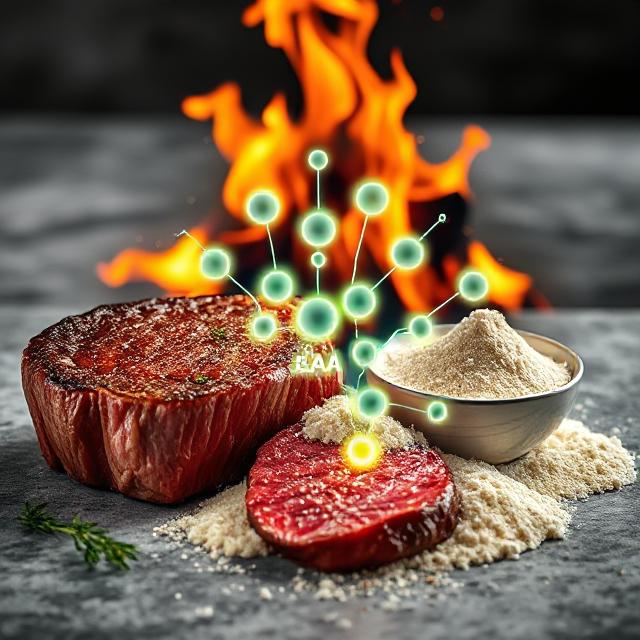
Table of Contents
Why Essential Amino Acids Matter More Than Protein Quantity
You’ve likely heard that “protein is king” for muscle gain, cognitive sharpness, and overall health—but the true secret lies deeper. It’s not just how much protein you eat; it’s whether you’re getting the full suite of essential amino acids (EAAs). These nine amino acids are irreplaceable—your body can’t make them, so you must supply them via diet.
In this article, we explore why essential amino acids matter more than protein quantity, how they fuel brain function, recovery, and resilience, and how to ensure you’re getting enough without overloading on mass protein.
🧬 What Are Essential Amino Acids (EAAs)?
EAAs are the amino acids your body cannot synthesize:
- Histidine
- Isoleucine
- Leucine
- Lysine
- Methionine
- Phenylalanine
- Threonine
- Tryptophan
- Valine
Together, they support building tissues, synthesizing neurotransmitters (like serotonin and dopamine), and maintaining metabolic balance. Without sufficient EAAs, your body can’t fully utilize other amino acids—even in large protein servings.
🔎 Quantity vs. Quality: The Real Difference
High Quantity, Low Quality
- Eating 150 g of low-EAA protein (e.g., some grain-based sources) might fail to trigger muscle synthesis.
- Your brain, liver, and gut can’t perform at peak without adequate EAAs for neurotransmitters and repair.
Moderate Quality, High EAA
- 30 g of EAA-rich protein (like whey, eggs, or soy) can deliver all the EAAs needed for optimal muscle repair, cognition, and hormone production.
- This means more efficient protein utilization, less digestive stress, and less caloric load.
Bottom line: your body responds strongest to EAA completeness—not total protein grams.
🧠 How EAAs Support Mental Clarity and Focus
Specific EAAs contribute directly to brain health:
- Tryptophan → Serotonin: Supports mood, calm focus, and healthy sleep cycles.
- Tyrosine (from phenylalanine) → Dopamine/norepinephrine: Boosts motivation, alertness, and cognitive drive.
- Leucine, Isoleucine, Valine: Aid mitochondrial function and neurotransmitter synthesis during fasting or stress.
Without balanced EAAs, cognitive function may suffer despite ‘adequate protein’ intake—leading to foggy thinking, low energy, or irritability.
🏋️ Protein Timing vs EAA Completeness
- Pre- and post-workout: 10–15 g of EAAs alone can trigger muscle protein synthesis—often eclipsing even full food sources.
- Fasted training: tiny EAA doses prevent anti-catabolic breakdown without the need for full meals.
- During fasting: EAA supplementation preserves metabolism and cognition with minimal insulin response.
When EAAs are prioritized, protein dosing becomes more precise, not massive—and never wasteful.
🍳 How to Ensure EAA Coverage Daily
1. Choose EAA-dense protein sources
- Whey or soy protein: ~3 g of leucine per 30 g scoop
- Eggs: a complete amino acid profile per 6–8 g protein
- Liver or organ meats: rich in methionine, lysine, and B vitamins
2. Combine plant proteins
- Beans + rice or legumes + seeds yield a full amino acid profile
- Quality matters more than sheer volume
3. Add EAA supplements if needed
- Useful for vegetarians, intense trainers, or fasting individuals
- Use between meals—even 5–10 g can maintain nitrogen balance and mental clarity
⚠️ Overeating Protein vs Under-Supplying EAAs
- Eating 200 g of low-EAA plant protein (e.g., wheatgrass smoothies) may not supply all EAAs.
- Meanwhile, 30 g of whey provides complete EAAs with lower caloric impact.
- Excess protein raises urea load, strains kidneys, and may block autophagy in fasting.
Prioritize EAA completeness over bulk protein—it’s both efficient and metabolically lighter.
🧭 Final Takeaway: Quality Over Quantity
- Essential amino acids matter more than protein quantity—they determine your body’s ability to synthesize tissues, neurotransmitters, and enzymes.
- Focusing on EAA-rich sources supports muscle, metabolism, and mental clarity
- Small doses spread strategically through the day often outperform large meals
Most importantly: rethink protein. Think EAA balance, not raw grams.